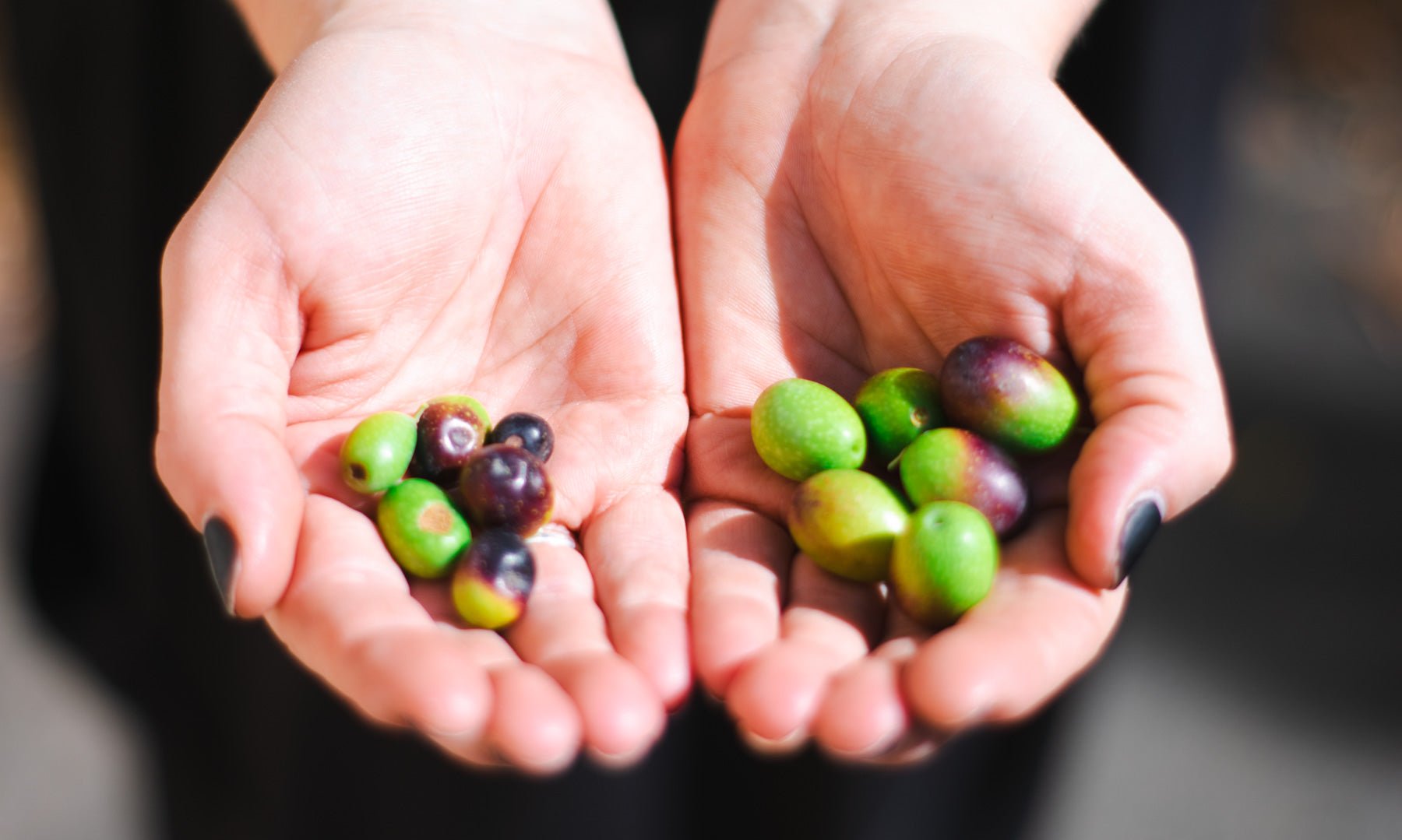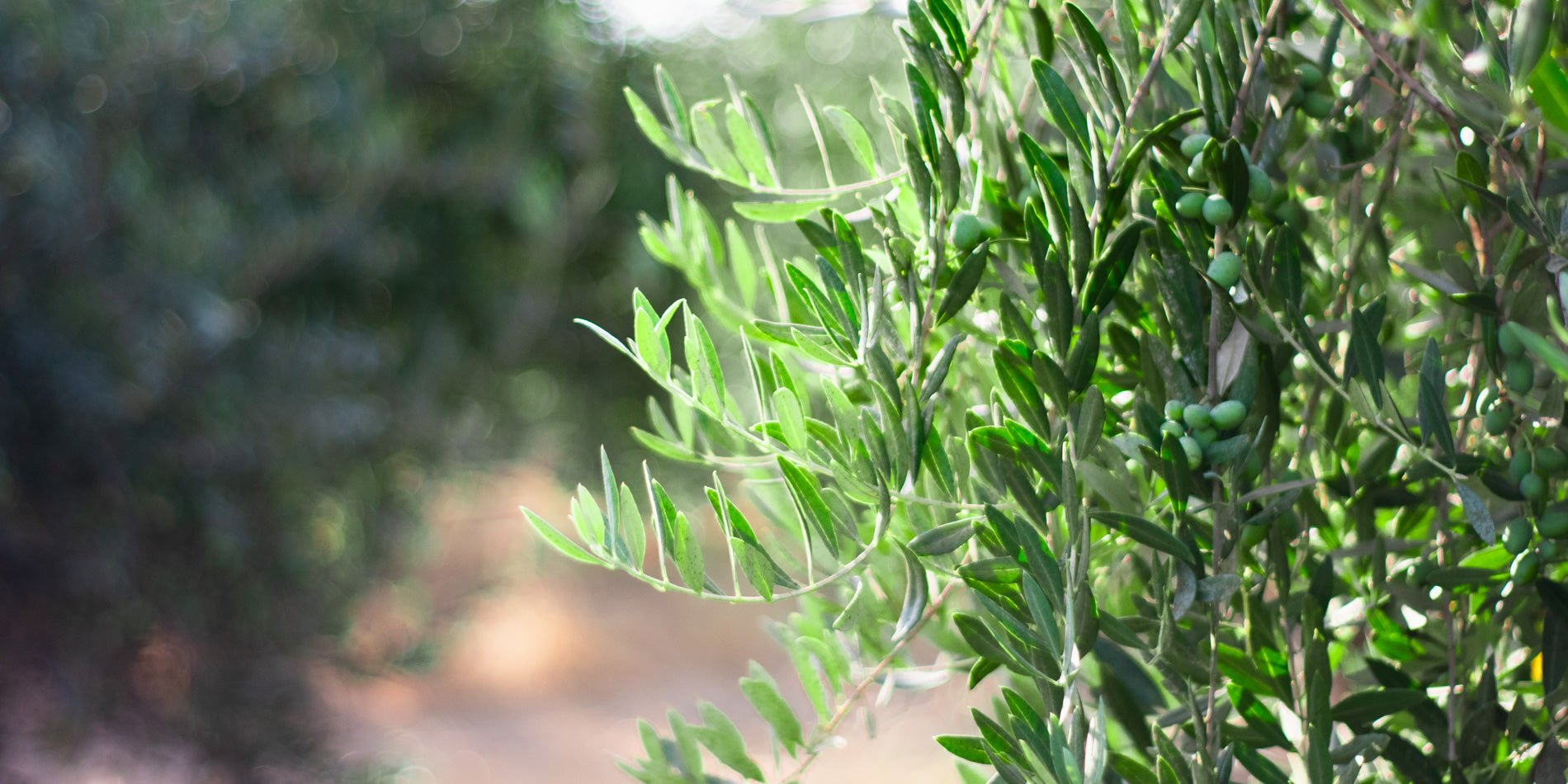5 Signs You're Actually Buying a Low-Quality Olive Oil
Most shoppers are aware of olive oil as a healthy source of fat compared to alternatives like butter, margarine, or highly processed seed oils. Health conscious consumers are likely also familiar with extra virgin olive oil, and maybe even polyphenol rich olive oil, as the healthiest options within the broad olive oil category.
It’s not easy to tell from first glance, however, whether a given olive oil is a heart-healthy product rich in antioxidants and polyphenols or a lower quality oil dressed up like one of its healthy counterparts. Learning to detect low quality oils will protect your wallet and your wellness, and will help guarantee that every olive oil you taste is peppery and pungent, as it should be!

Sign #1: The Bottle is Clear or Stored in Bright Light
Polyphenols, the healthy compounds in olive oil that convey its most impressive flavor and health benefits, degrade when they are exposed to heat and light. This process is known as oxidation and can make your olive oil taste spoiled or rancid.
Producers of high-quality olive oils will package their oils in opaque glass bottles, which are often green or brown, to protect the oil inside. Many high quality olive oils are also packaged in solid colored tins which block light. Clear glass bottles do show off the beautiful color of olive oil, but unless you’re purchasing the oil as decoration rather than to consume, a dark colored bottle is a safer bet.
Storage also counts for olive oil quality. Olive oils should be stored in dark, cool places, so avoid olive oils stored directly under grocery store fluorescent lights, especially if they are bottled in transparent glass or plastic.
Sign #2: It's Remarkably Cheap
The process of producing high quality, polyphenol rich olive oil is expensive, so olive oils that are noticeably cheaper than the other bottles on the shelves, likely aren’t as high in quality. In order to produce polyphenol rich olive oil, olives must be harvested at the proper time, they must be immediately cold pressed, and finally bottled promptly. This process requires expertise, careful timing, and proper equipment, all of which come at a steep cost to producers.
A cheap price tag is likely an indication that the producer cut corners by using late-harvest olives, extracting the oil from the olive with heat (which officially disqualifies it from EVOO status), or even mixing the olive oil with cheaper refined oils.
An olive oil that is high in quality will be worth the cost. If you’re not sure, try an at home taste test. We recommend comparing our carefully crafted Frantoio Grove polyphenol rich EVOO to a grocery store bottle. You’ll taste the difference!
Sign #3: It Doesn't Have a Harvest Date
Reputable producers of olive oils will display harvest dates on their olive oil bottles, similar to winemakers. However, whereas wine can improve with age, olive oils decline in quality over time. Polyphenols break down over time, so an olive oil that is older than a year old, is likely lower in polyphenol content compared to a fresh newly-harvested olive oil like an olio nuovo.
It’s important to note that a “best by” date is different from a harvest date. By the time an olive oil reaches a “best by” date, its quality has likely already significantly declined.
Sign #4: It Tastes Mild, Buttery, or Rancid
High quality, polyphenol rich olive oil has a distinct taste that can’t be replicated in a lower quality oil. Polyphenol rich olive oils should taste slightly bitter, a little grassy, and they should leave a lingering peppery sensation in your throat. If the olive oil makes you cough slightly due to this peppery flavor, it’s a sign of quality. The source of these distinct flavors are olive oil polyphenols such as oleocanthal.
When polyphenols break down or were never in large quantities in the first place, the oil may taste neutral, buttery, or, if the oil has been oxidized, rancid. Any olive oil that is labeled “light” or “mild” has likely been processed to be low in polyphenols and will fall into this low-flavor category.
Sign #5: Vague or Missing Origin Information
Another way that olive oil is similar to wine is that producers of quality products will specify the exact region where the olives were grown. The highest quality producers will narrow this specification down to the estate or grove that grew the olives. Olive oils grown and bottled on a single property tend to be higher in quality, richer in polyphenol content, and superior in taste.
When olive oil bottles claim to have been made in a broad geographic area or indicate that they’ve been blended, avoid the oils. “Product of Italy” isn’t nearly as safe a label for a specific estate, especially one that has been certified by a local governing body like the California Olive Oil Council. A 2010 UC Davis study found that 69% of imported oils labeled as extra virgin failed to meet the internationally accepted EVOO standards whereas only 10% of California olive oils failed the same test. Look for very specific labels for regions and estates that you can research. The more the producer volunteers to share about the grove to bottle journey of their olives, the more likely it is that you’ve selected an oil from an excellent producer.
Invest in Genuine Polyphenol Rich Olive Oil
Next time you put olive oil on your shopping list, revisit this list of warning signs so you know what not to purchase. It can be tricky to identify truly high quality olive oils, but the effort that goes into doing so will certainly be worth it. Polyphenol rich olive oils convey a wide variety of health benefits from anti-inflammatory properties and cardiovascular protection to potent antioxidants. They also taste superior.
For many high-quality olive oil brands like Frantoio Grove, olive cultivation and oil production is more than a process. It’s a set of traditions and values, often dating back generations. For us, olive oil is a culture and our olive oils communicate the unique character of our grove. We encourage you to try our olive oil today to taste the difference.






